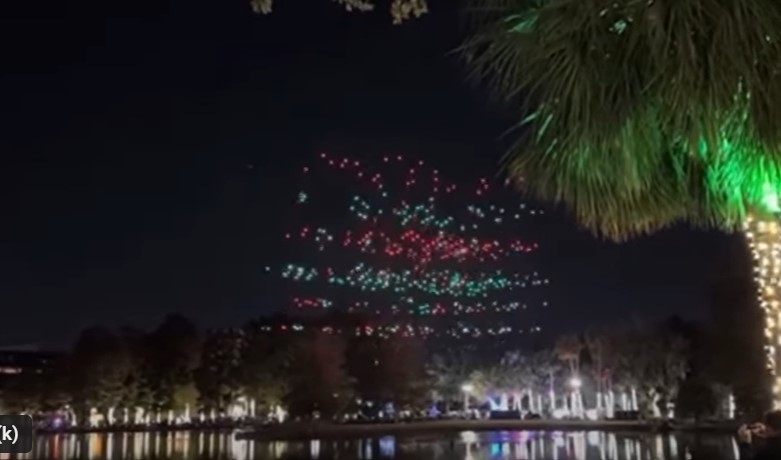By Kylie Bielby and Philip Butterworth-Hayes
Calculating the optimal distance between the outer geo-fence perimeter for drone show operations and the spectator area, or crowd-line, will be one of the key areas of focus for the US Federal Aviation Administration (FAA) in its investigation of two drone show accidents in the USA at the end of December.
A young boy had to undergo heart surgery after being hit by a display drone during Orlando’s (Fl) Lake Eola Park drone show December 21 event. According to press reports, he returned home from the hospital a few days later following a successful operation. Another drone-show spectator was hit by a falling drone on December 31 at a Folly Beach (SC) and was treated on-site for non-life threatening injuries.
The FAA has begun investigations into both events – with the National Transportation Safety Board also involved in the Orlando event – but the full result of its work may not see the light of day for two years. In the meantime, the FAA may well come under pressure to re-write elements of its National Aviation Events Program or change guidance material to its Flight Standards District Offices (FSDO) which sets out the rules for drone air shows.
According to an FAA briefing document:
“Under this program, drones can be approved under one of three pathways; 14 CFR part 107, 14 CFR part 91, or under Title 49 U.S.C. section 44809 if flown for recreational/educational purposes. As with all drone operations, the pathway is determined by the size of the aircraft and the nature of its use….one of the common requirements of these pathways is a full safety risk analysis by the local FSDO. The FAA has created several tools to assist these professionals in evaluating and mitigating risk, including Safety Risk Management training and a detailed checklist to follow. This checklist is a tool to establish collaboration between drone aviation event applicants and FAA personnel. It helps inspectors make site-specific risk-based decisions for the integration of drones into these events by considering every detail of the operation.”
Following the Orlando accident the FAA placed some of the drone show company Sky Elements’ operations on hold and suspended its Part 107 Waiver, which allows a single pilot to control multiple drones, flying at night, operating in populated areas. Several drone shows were cancelled following the Orlando incidents but many others went ahead, with revised safety measures.
In a youtube broadcast discussing the Orlando event, CEO of industry analyst and drone show organiser Flyby Guys Steven Sutton suggests the geofencing, rather than firmware failure, had a major role to play in the Orlando drone show failure.
A further probable consequence of the two events will be to accelerate activities within the Drone Show Association, a trade body set up to share best practice and experiences within the industry. The association’s main objectives include developing and strengthening the base of national and international legislative acts which regulate drone fleet flights, and providing education for drone show specialists to support their ability to conduct safe and of high quality shows.
For more information
https://abcnews4.com/news/local/folly-beach-new-years-eve-drone-show-halted-after-drones-fall-from-sky-reports-1-person-injured-abc-news-4-2024-12-31-2024#
https://droneshowassociation.org/
https://medium.com/faa/drones-at-air-shows-and-other-aviation-events-d53471eb721e




